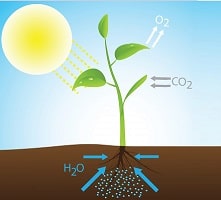What Is Biodiversity?Definition, Types And Importance with their examples
The variety of living organisms that inhabit the biosphere is known as biodiversity or biological diversity . The biosphere includes all aquatic, marine and terrestrial ecosystems, which represents all the areas where there is life on Earth.
Thus, biodiversity is the set of all living beings and their interactions at different levels of ecological organization.
It is estimated that approximately 1.75 million species have been discovered around the world. But this represents only a part of the existing species. An estimate of the species that inhabit the Earth is in the order of 14 million or more.
The systematic is the branch of biology that is responsible for classifying living organisms and is essential in studies of biodiversity.
The word “biodiversity” became popular after 1992 at the “Conference on Environment and Development” of the United Nations (UN) in Rio de Janeiro, Brazil.
Types of biodiversity
Genetic diversity
It refers to the variety of genes in a species that allow the adaptation of the species. For example, when a man and a woman have more than one child, each sibling is genetically unique, with genes from the combination of their parents.
Diversity of ecosystems
It refers to the number of ecosystems on the planet or in a specific geographic region . The loss of an ecosystem means the loss of the interactions between the species and the biological productivity of that ecosystem. For example, the Amazon is the set of many terrestrial and aquatic ecosystems in the same geographical region.
Diversity originated by man
Humans have generated diversity in animals, plants and fungi by domesticating them. This diversity is also being affected by migration, economic forces and globalization in agriculture.
Loss of biodiversity
The loss of biodiversity is the reduction of the number of species that live in a certain space and time on Earth.
The dramatic loss and large proportion of species is called mass extinction . Throughout the geological history of the Earth there have been five massive extinctions. During these extinctions, much of the biodiversity of those times was lost.
It is said that we are going through a sixth mass extinction. Human activity is the force behind the current biodiversity crisis. It is causing an accelerated loss of species in a short time.
Causes of biodiversity loss
The combined effect of all human activities in the last two hundred years is causing an accelerated decrease in biodiversity. We know that both animals and plants are renewable natural resources, but if we do not allow them to reproduce, they will eventually disappear forever.
Hunting and uncontrolled fishing
The demand for exotic animals, such as turtles or rhinoceroses, and their uncontrolled or excessive hunting and fishing is one of the greatest threats to the loss of biodiversity.
Loss of habitats
The growth of urban areas and the expansion of agricultural and livestock production areas sweep away the previously established ecosystems. The species that lived in this ecosystem disappear or move to other habitats that may not be the most appropriate.
Climate change
The environmental changes that Earth is experiencing as a result of the effects of greenhouse gases affect not only humans, but also all other living species.
The introduction of exotic or invasive species, such as cats and rats, in some ecosystems produced a considerable loss of species.
Consequences of the loss of biodiversity
The problems of the loss of biodiversity not only refer to the loss of a certain species, but to the potential interactions of this species with others. The biological interactions are central to biodiversity .
Animals, plants and microorganisms do not live isolated on Earth. They are all part of a chain that, when broken, weakens interactions in general. Thus, there are species that are key to the maintenance of life in their environment, such as cacti in the coastal dunes of Mexico.
With the increase of large-scale industrial agriculture, many local species have been lost. For example, in Mexico only 20% of the corn varieties that existed in 1930 are sown.
Importance of biodiversity for human life
The human species is part of the biodiversity of the Earth. As such, the human being depends on other species and communities to obtain the necessary requirements for their subsistence.
Medical uses
Since time immemorial humans have used plants for healing purposes. The best-known examples of medicines derived from plants are aspirin and digitoxin.
Antibiotics are compounds produced by fungi and bacteria to defend themselves. The discovery of penicillin is symbolic of the advance in modern medicine.
Diversity in agriculture
Each plant, animal or fungus currently cultivated has a wild ancestral origin. Man has selected and produced a great variety of spices to adapt to nutritional demands, growing conditions and resistance to diseases. Maintaining the biodiversity of the species we consume is invaluable to ensure our future.
Nature is a system of permanent equilibria. The predatory species keep other species at bay preventing excessive population growth with unpredictable consequences.
How to protect biodiversity?
Legislation
Within many countries there are laws that protect endangered species and that regulate hunting and fishing.
Safeguard areas
Protected natural areas have also been created where natural environments have not been altered by human activity , in order to preserve the most fragile ecosystems found there. Here you will find natural parks, natural monuments and sanctuaries.
Zoocria
It refers to the captive breeding of rare or endangered species in human-controlled environments.
Ecological research and education
This measure seeks to encourage and promote knowledge about aspects related to biodiversity and the protection of species and their environments.
Restoration of habitats
The purpose is to return the affected ecosystem to its original state as much as possible.

